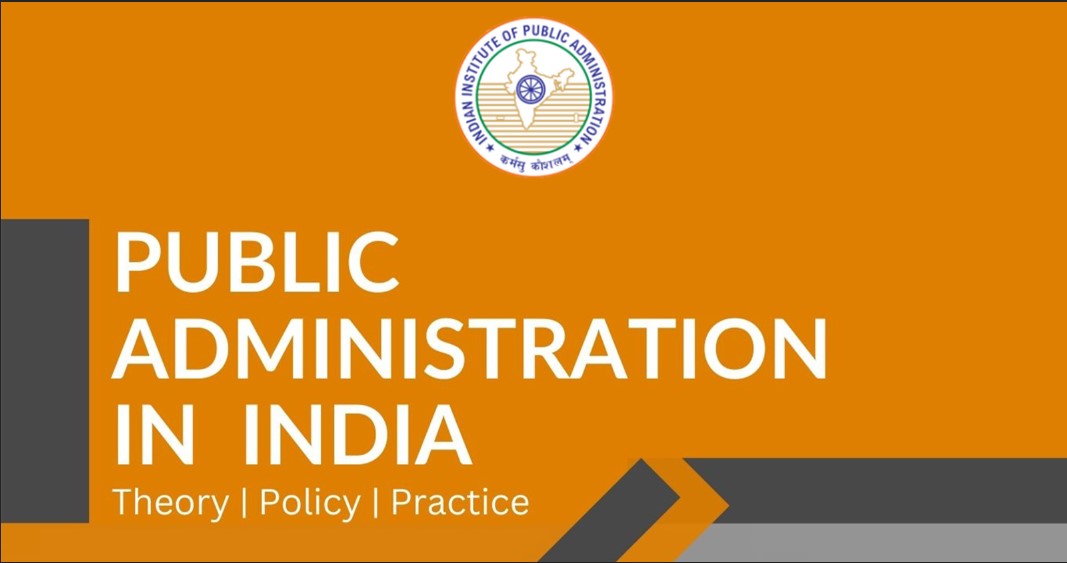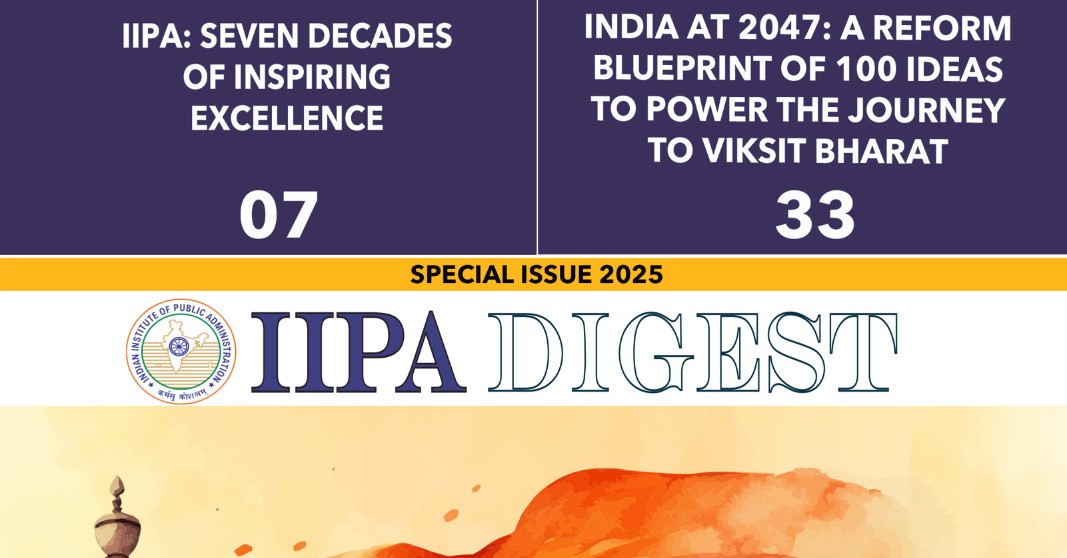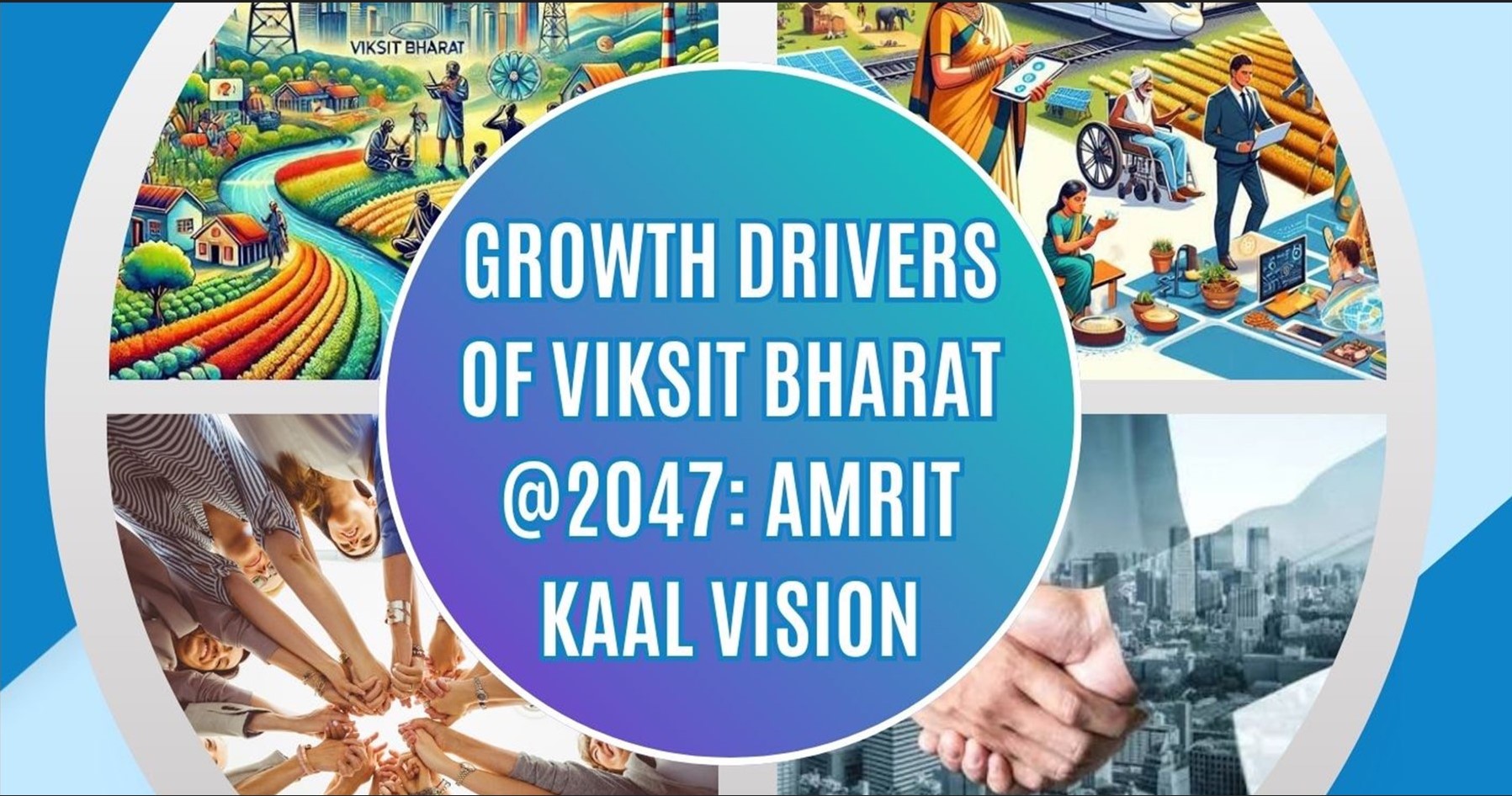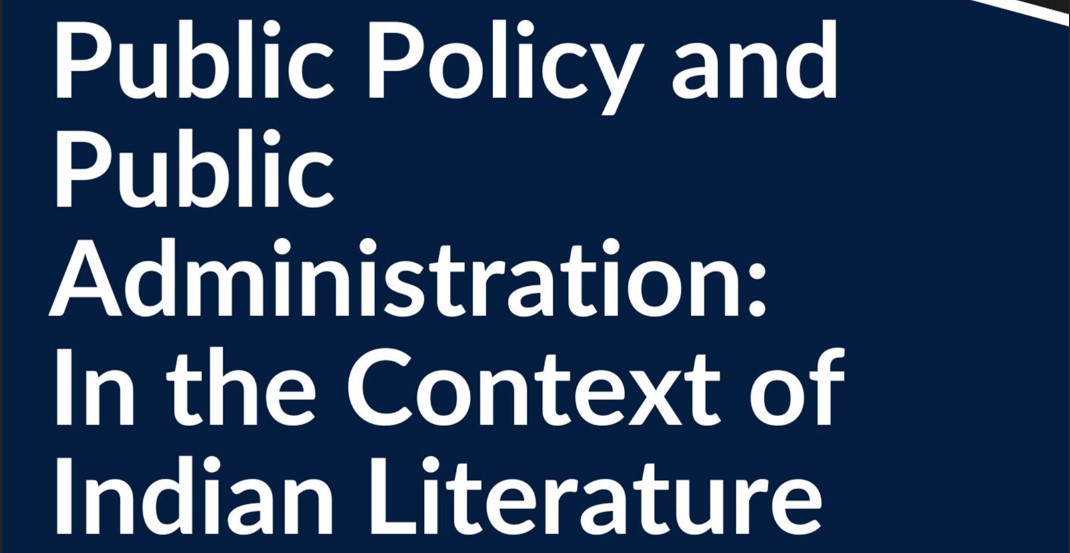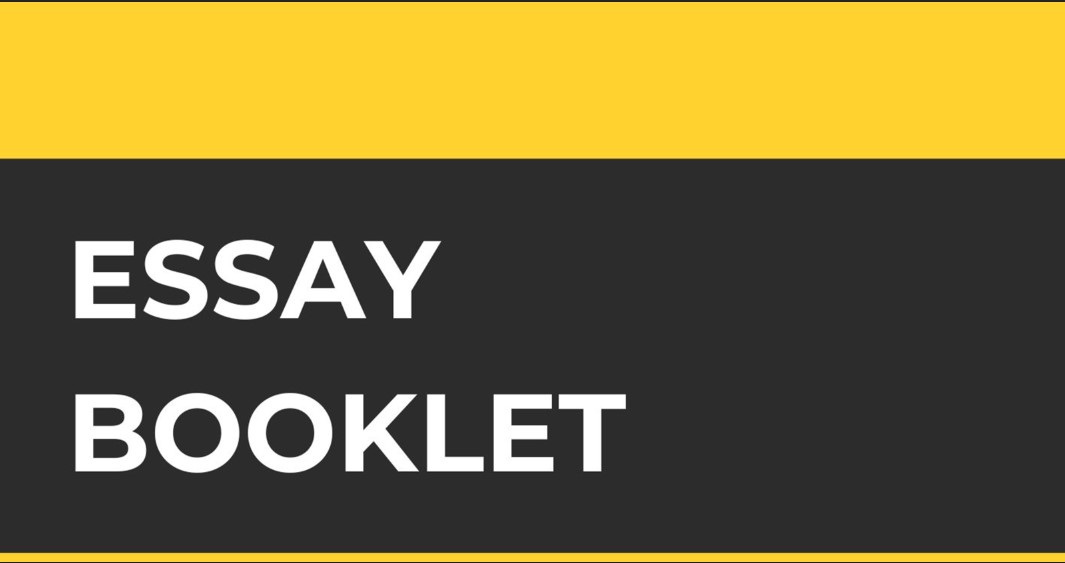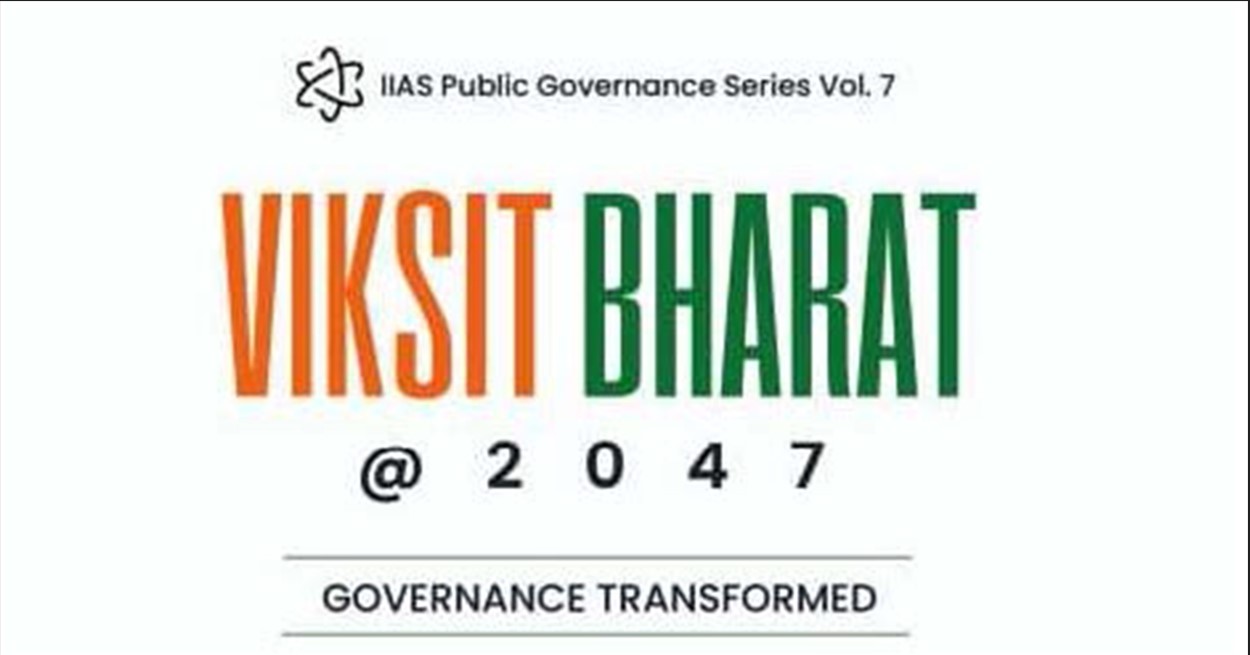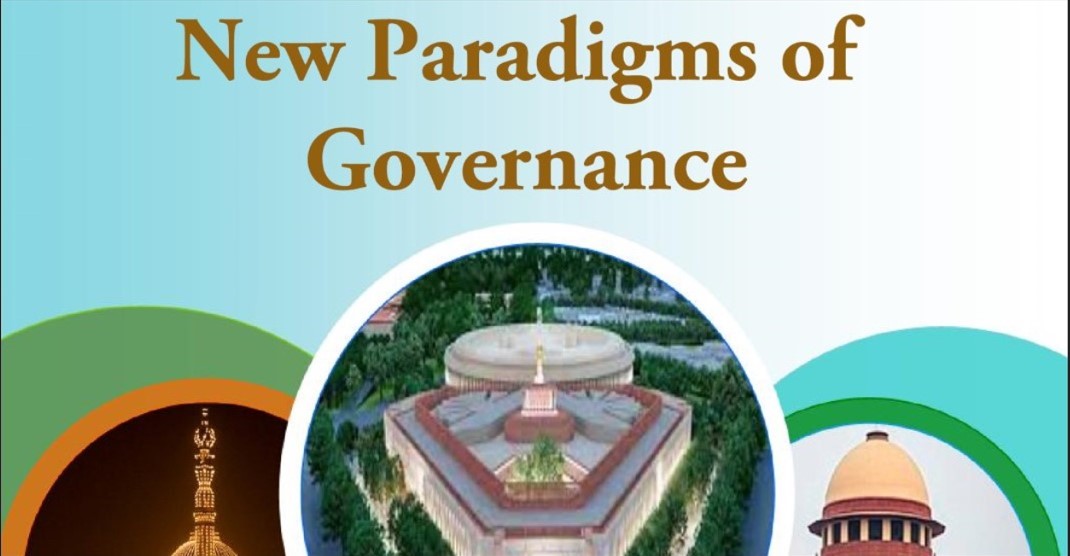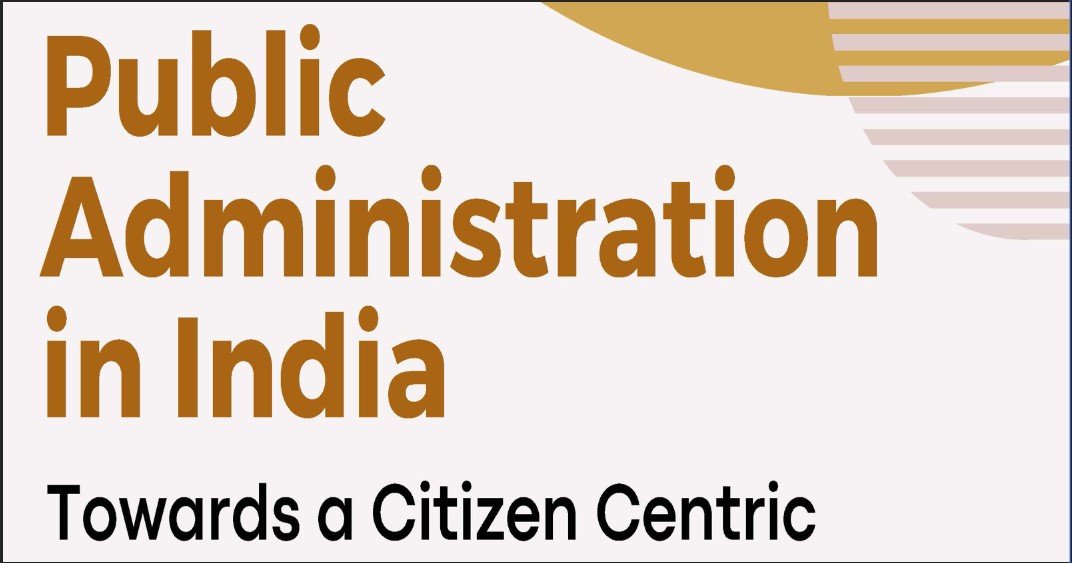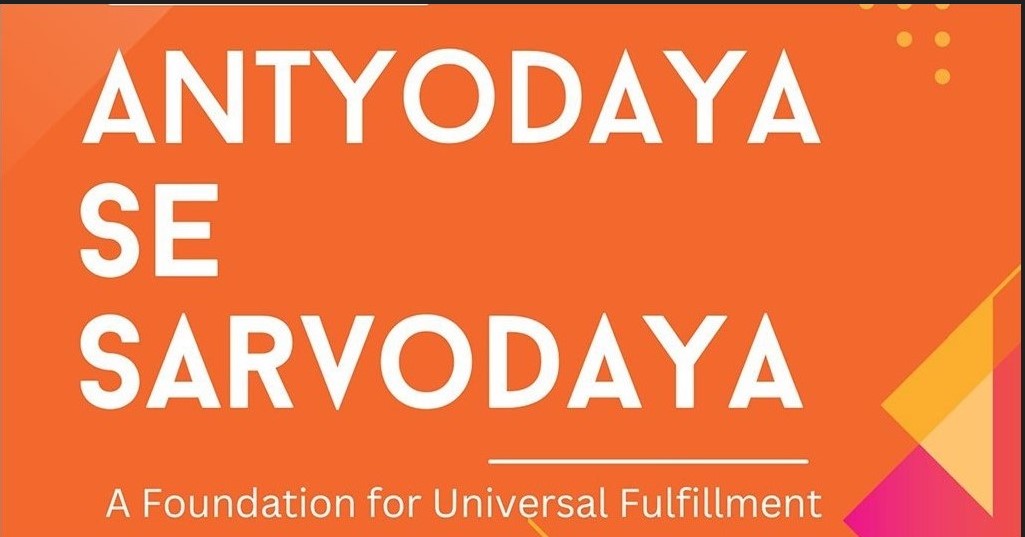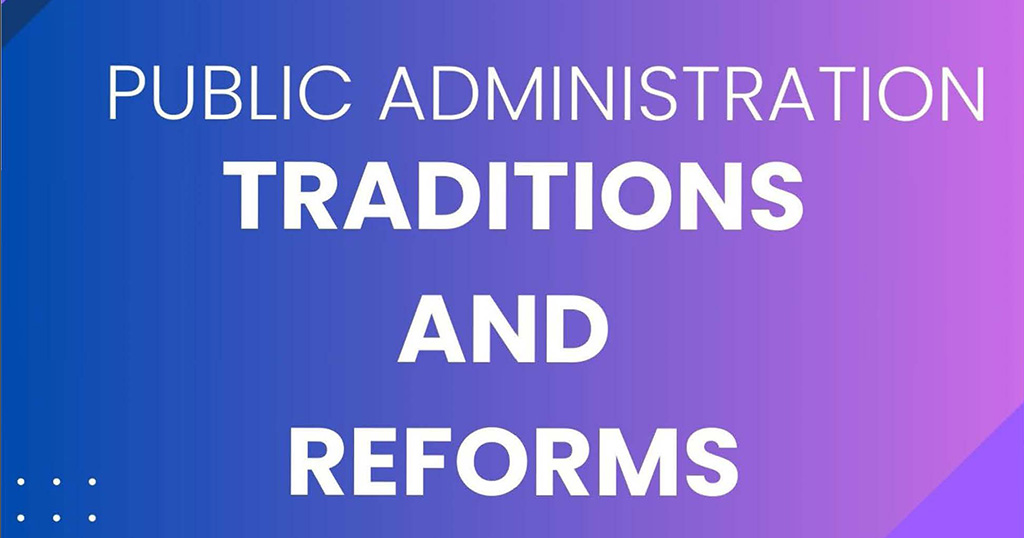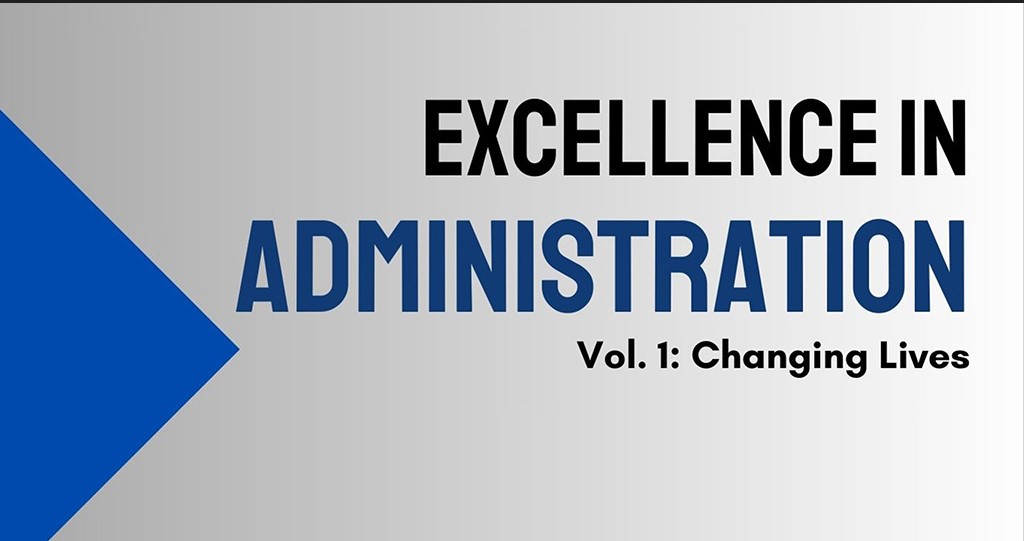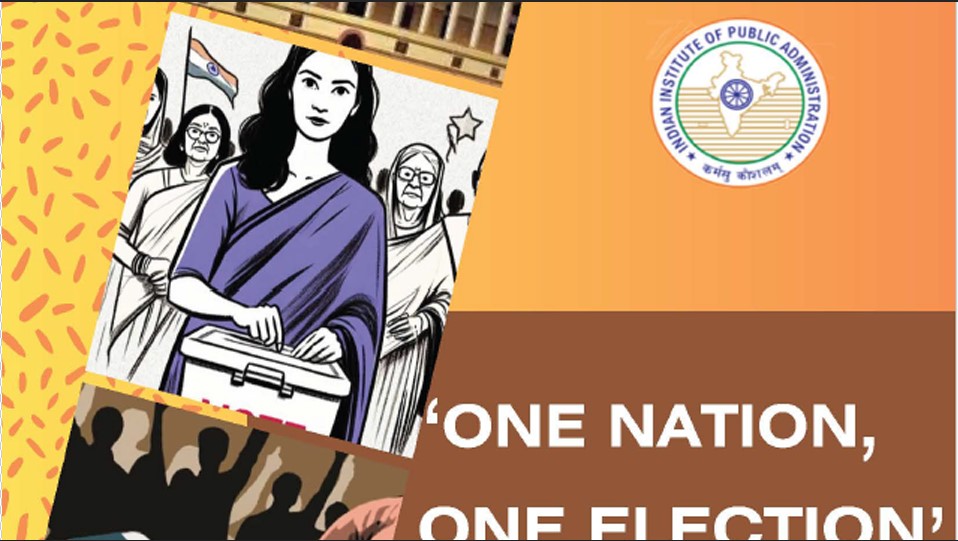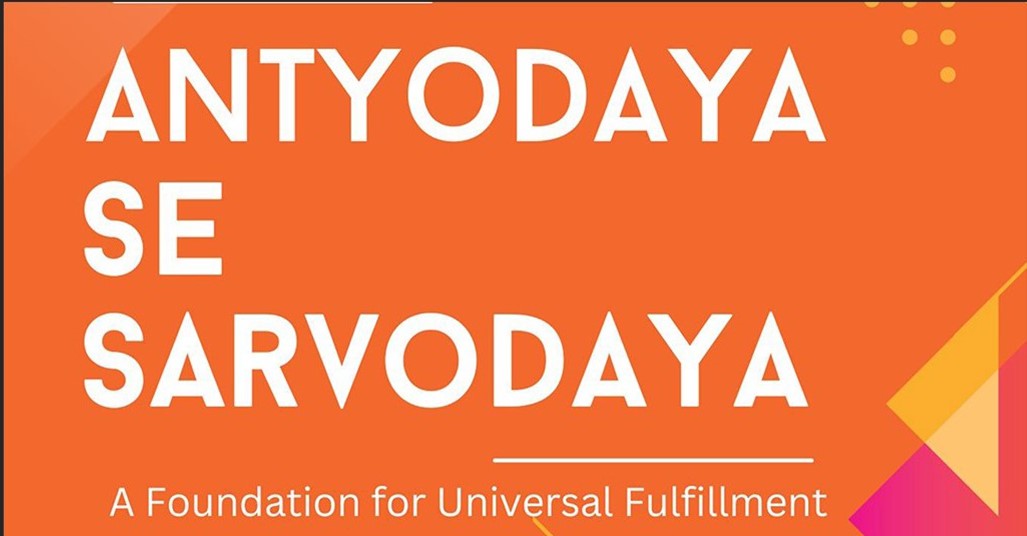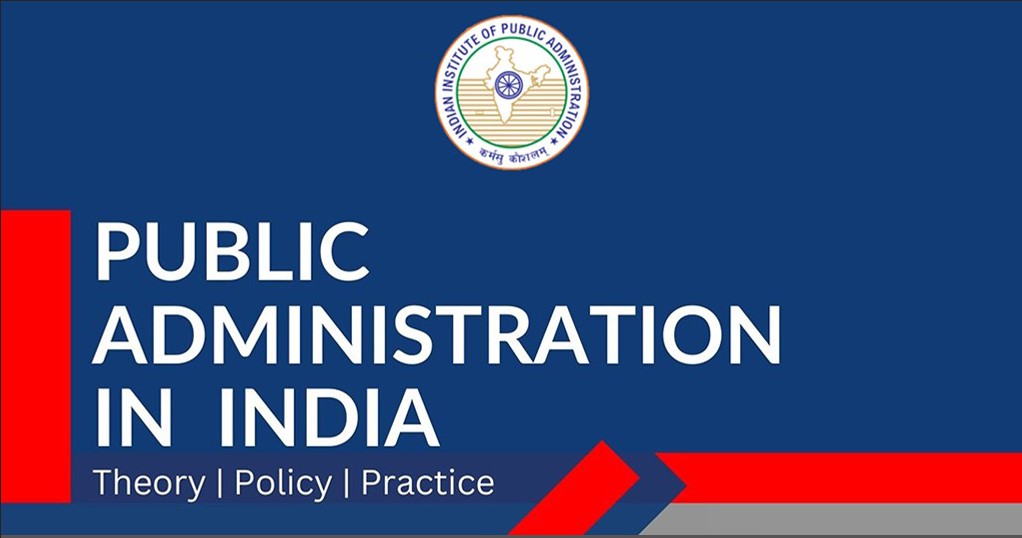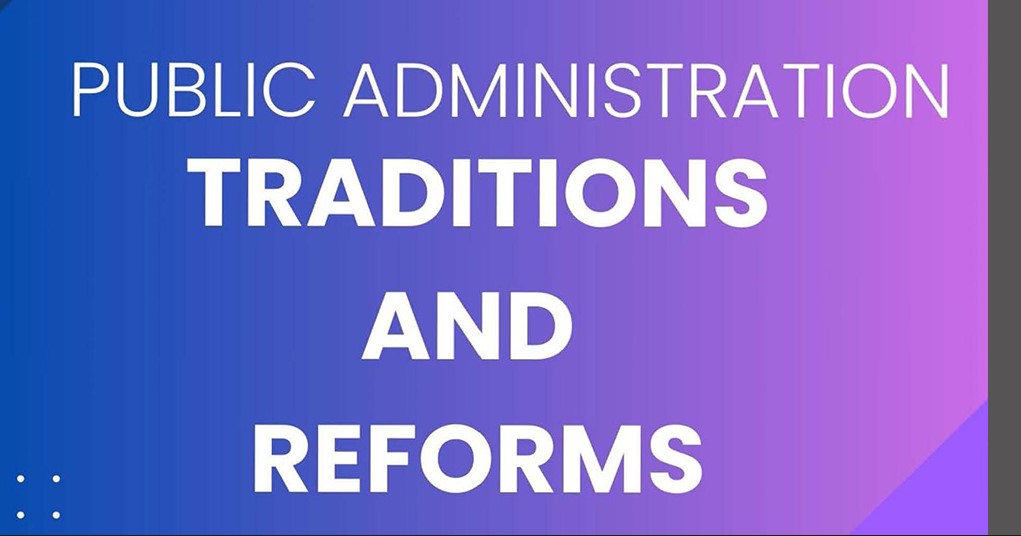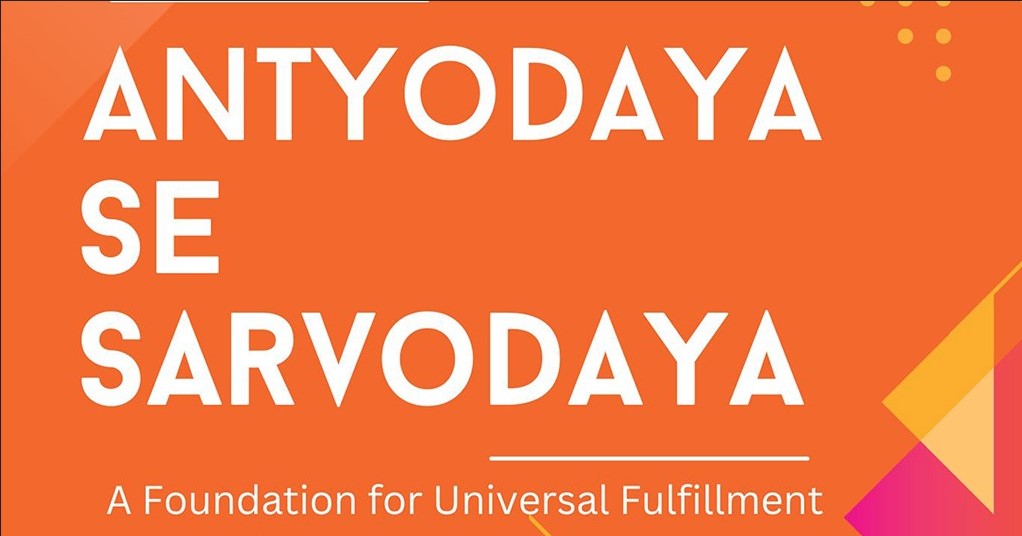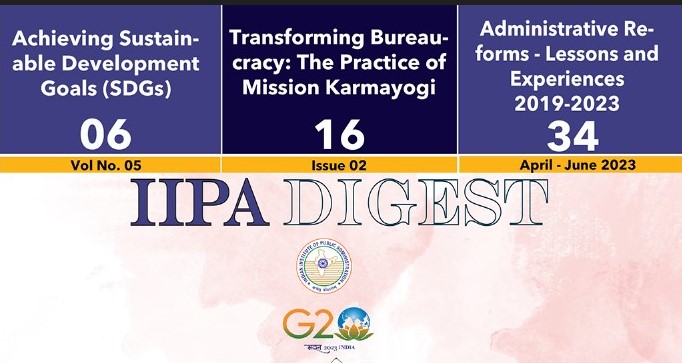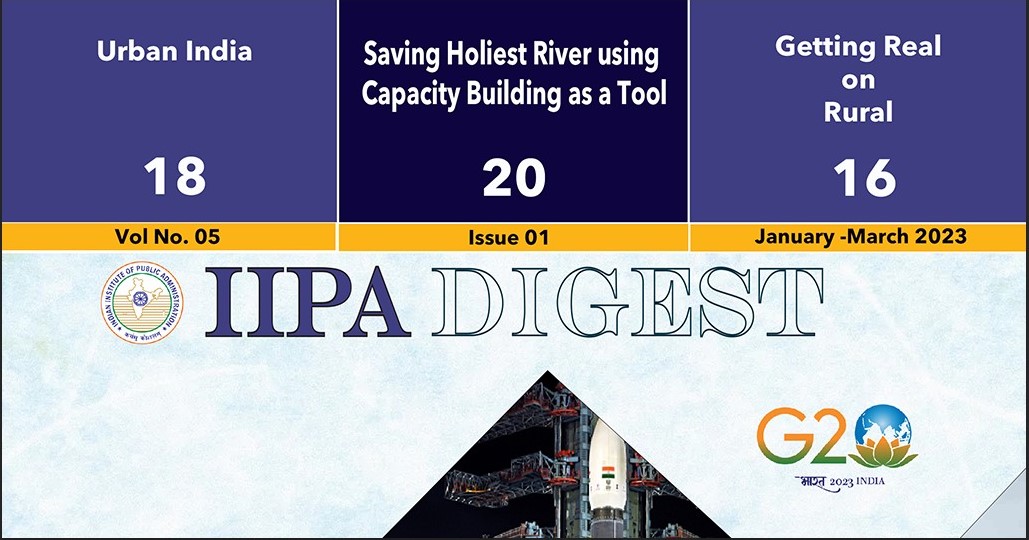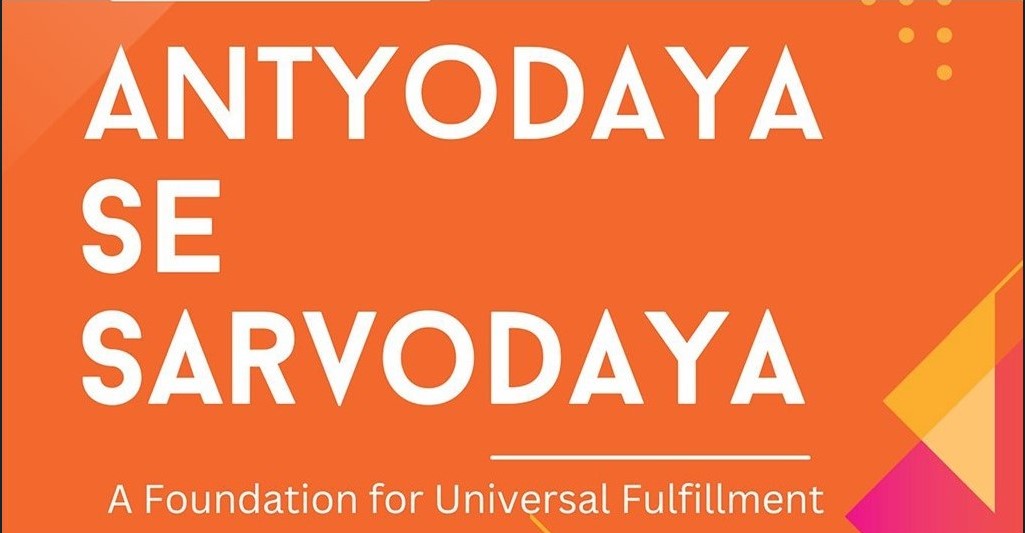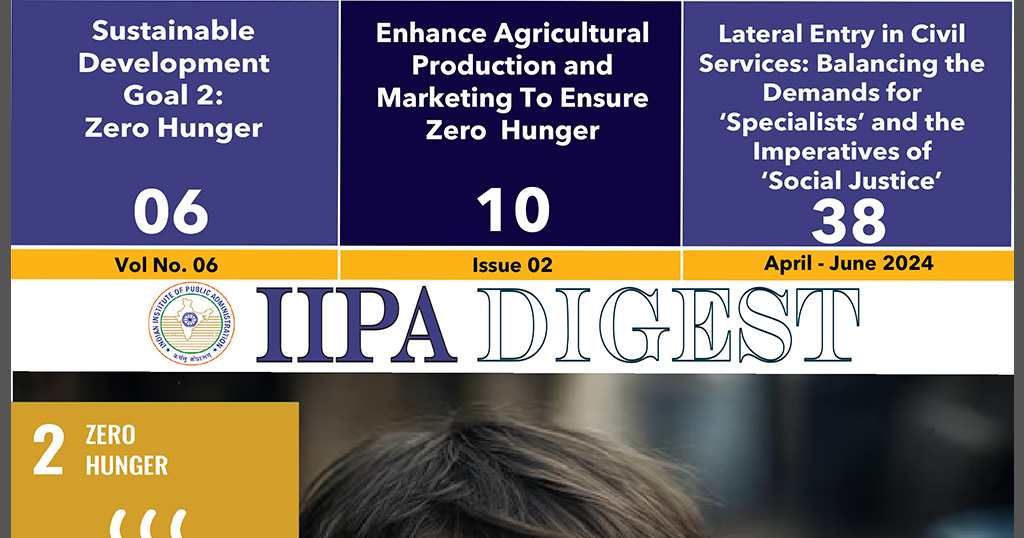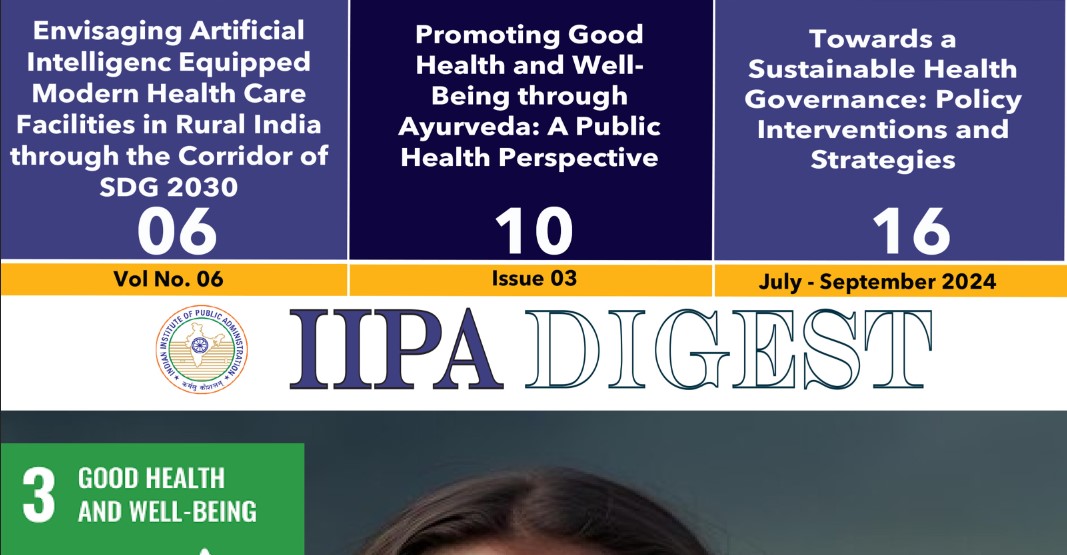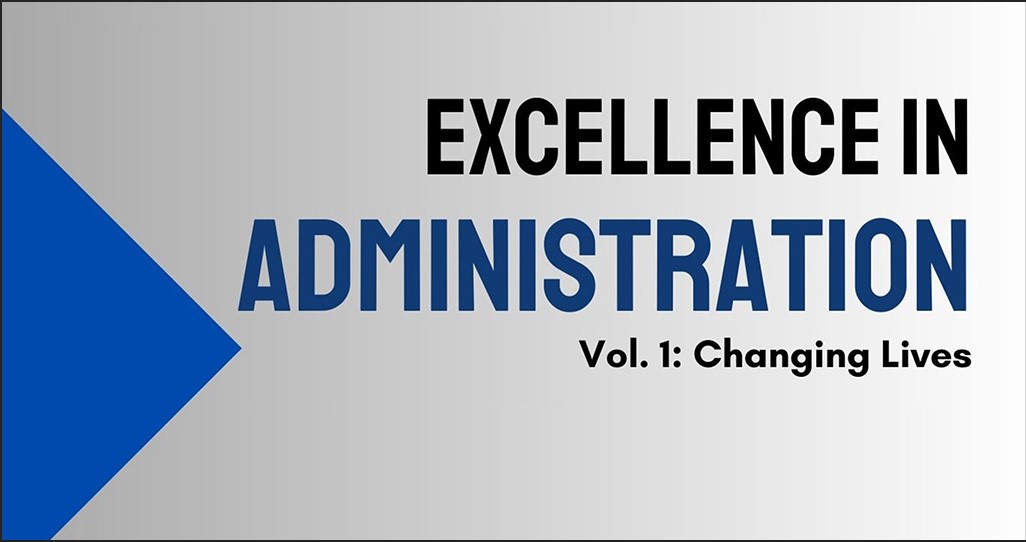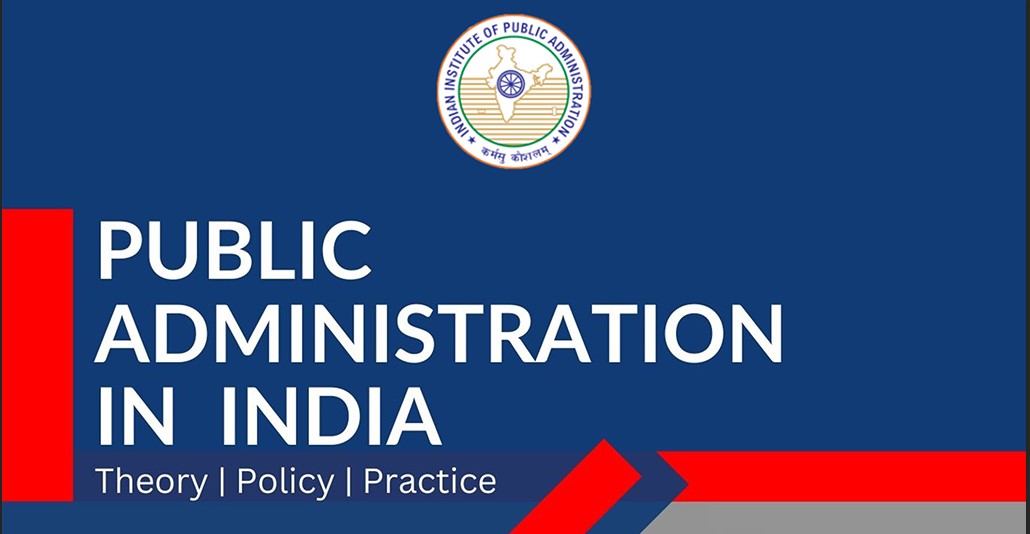Administrative Law
Abstract
The administrative process has become a necessary evil in all progressive societies, especially in welfare states where the government prepares and oversees numerous programmes for the advancement of society. The growing social consciousness of the age, the increasing complexities of administration and organisation, and an incredible rise in the pace of life caused by the manifold application of science and technology to the habits of life are the three major influences responsible for the growth and expansion of the administrative law, the administrative technique, and the administrative process. The main object of the study of administrative law is to find out how these administrative authorities could be kept within their limits so that discretionary powers may not be turned into arbitrary and unchannelized powers. This chapter has been devoted to discussing the meaning, scope and significance of administrative law; Dicey on administrative law; delegated legislation and administrative tribunals. The administrative tribunals are independent and not subject to any administrative influence in the decision-making process.
Keywords: Progressive, Oversees, Advancement, Incredible, Manifold, Complexities, Consciousness, Expansion, Arbitrary and Channelized.
Introduction
Remarkable technological and scientific progress has made the modern democratic state not a mere watchdog or a police institution but an active participant, interfering in almost every sphere of individual and corporate life in society, in the changed role of a service state and a welfare state. The growing social consciousness of the age, the increasing complexities of administration and organisation, and an incredible rise in the pace of life caused by the manifold application of science and technology to the habits of life are the three major influences responsible for the growth and expansion of the administrative law, the administrative technique and the administrative process. The growth of the Executive Branch, which now wields vast power and touches almost every aspect of daily life, heightens the concern that it may slip from the Executive’s control, and thus from that of the people.
Meaning of the Administrative Law
The body of law that addresses the legal basis of administrative discretion and its limitations is administrative law. It defines the extent of discretion granted to administrative authorities, officers, officials, and agencies. In a broader context, it encompasses all statutes, charters, rules and regulations, resolutions, judicial decisions, and orders that directly or indirectly influence the administrative structure. According to Barthelemy, Administrative Law comprises the principles guiding the activities of services, except judicial ones, concerning the execution of law. It emphasises the constitution, statutes, resolutions enacted by the legislature, charters granted by the legislature or executive, ordinances, rules, regulations, orders, and decisions issued by administrative authorities, customs and conventions, and judicial decisions. Ivory Jennings describes Administrative Law as “the law relating to the administration,” which determines the powers and duties of administrative authorities and provides remedies for individuals whose rights have been violated. According to C.F. Strong, “Administrative Law is the body of rules which regulate the relationship of the administrative authority towards private citizens and determine the position of state officials, the rights and liabilities of private citizens in their dealings with these officials as representatives of the state and the procedure by which these rights and liabilities are enforced.” Administrative law involves the study of how the parts of our system of government that are neither the legislature nor the courts make decisions. These entities are administrative agencies that are usually located in the executive branch of government and are charged with the day–to–day details of governing. These agencies are created and assigned specific tasks by the legislature. These tasks are carried out by the agencies by making decisions of various sorts and supervising the procedures by which the decisions are carried out. Administrative law is the contemporary expression of the tendency towards absolute power - towards consolidated power outside and above the law. Most of these efforts have aimed to make the administrative state function more compatible with our democratic commitments. Administrative law has a dual purpose: to generally improve the quality, efficiency, and effectiveness of government decision-making and to enable people to test the lawfulness and merits of decisions that affect them. A person whose interests are affected by a government (or administrative) decision can challenge that decision in a court, an administrative tribunal, or through an investigatory agency/ombudsman. This provides a mechanism for achieving justice in individual cases by enabling people to test the lawfulness and merits of decisions that affect them. The provision of feedback to decision makers improves the quality of government administration and provides a mechanism for ensuring that the government acts within its lawful powers. Thus, it contributes to the accountability system for government decision-making. Administrative law mechanisms not only benefit the government but also promote good corporate governance. The systemic benefits that characterise it-individual justice, good governance, lawfulness, and accountability are as critical for private corporations to demonstrate as they are for government.
Administrative law is a by-product of the government’s intensive form. During the last century, the government’s role has changed from laissez-faire to paternalism and from paternalism to maternalism. Under the force of globalisation, the role of governments is fast changing, and a government is seen more as an enabler, facilitator, and regulator than as a mere provider. Today, the expectation from the government is not only that it will protect its people from external aggression and internal disturbance but also that it will take care of its citizens from the cradle to the grave. Therefore, the development of administrative processes and administrative law has become the cornerstone of modern political philosophy.
Administrative Law Defined
The basic purpose of administrative law is to check abuse of administrative power as power corrupts and absolute power corrupts absolutely; to protect citizens from unauthorised encroachment on their rights and interests and ensure that officials impartially determine their disputes; and to make those who exercise public power accountable to the people.
Administrative law is defined as a branch of public law that deals with the organisation and powers of administrative and quasi-administrative agencies and prescribes principles and rules by which an official action is reached and reviewed in relation to individual liberty and freedom.
According to Jain and Jain, administrative law deals with the structure, powers, and functions of the organs of administration, the limits of these powers, their methods and procedures, and the methods by which their powers are controlled, including legal remedies available to those whose rights are infringed. It essentially covers how administrative bodies are organised, what they can do, how they do it, and how their actions can be challenged.
Administrative law deals with the powers and duties of administrative authorities, the manner in which the powers are exercised, and the remedies available to the aggrieved persons when those powers are abused by these authorities. For a variety of reasons, the administrative process has become a necessary evil in all progressive societies, especially in welfare states where the government prepares and oversees numerous programmes for the advancement of society.
Having a precise definition of administrative law that can cover the entire range of the administrative process is not feasible. “Administrative Law is made up of all these legal rules whether formally expressed by statutes or implied in the prerogative which have as their ultimate object the fulfilment of public law. First, it touches the legislature in that the formally expressed rules are usually laid down by that body. Second, it touches the judiciary in that (a) rules govern the judicial action that may be brought by or against administrative persons, (b) administrative bodies are sometimes permitted to exercise judicial powers, and third, it is of course essentially concerned with the practical application of the law.”
In addition to all branches of government, administrative law touches administrative and quasi-administrative agencies, Corporations, Commissions, Universities, and sometimes even private organisations. Furthermore, administrative law is made up not only of legislative and executive rules and a large body of precedents but also of functional formulation, for every exercise of discretion forms a rule for future action.
Scope of the Administrative Law
Administrative law has a wide scope because it covers the entire public administration, which is conditioned by rules, regulations, laws, and other legislative provisions. According to the Committee on Public Administration of the Social Research Council (1938), the scope of administrative law includes problems of public personnel and fiscal administration; legal conditions in administrative discretion, administrative law, and administrative courts: administrative regulation and examination; government contracts and claims against government; remedies against administrative actions; and law relating to the status and recognition of professional associations and legal rules that govern actions of plural headed administrative institutions/bodies.
In his book Introduction to Administrative Law, James Hart divided the field of Administrative Law into the law of internal administration and the law of external administration. About the law of internal administration, you will see public office or what Goodnow has called official relations. Topics such as legal qualifications and disqualifications for the office, legal aspects of appointment, new conditions of service, legal issues about a hierarchical form of departmental organisation the legal relationship between the administrative superior and the subordinate.
The form of departmental organisation, the legal relation of the administrative period to the subordinate and the legal relationship between the power of removal and of administrative management. The law of external administration comprises 4 parts, i.e., the first part deals with the powers and duties of administrative authorities related directly to private interests; the second part covers the scope and limits of such powers; sanctions or means of enforcement attached to official decisions are included in the third part; and remedies against official actions taken are covered in the last part. Moreover, the official powers and administrative responsibilities, including non coercive, semi-coercive-inspections, legal and extra-legal, delegated legislation, administrative orders and administrative adjudication are also covered under the scope of administrative law. The administrative responsibilities may be related to the executive, legislature, electorate, law courts, judicial reviews of administrative acts, claims against the administrative authorities, and remedies against the administrative actions taken.
Noodles, Administrative Law is concerned with the functions of administration and the relations of administrative authorities with the individual, as well as the other authorities of the state or the nation. However, it does not deal with the organisation of these administrative authorities and their internal problems, which come within the scope of public administration. Administrative law also deals with government departments, public officials, statutory bodies, public corporations, administrative tribunals, and local authorities. The legal relationship between the administrative authorities and individuals concerning the misuse of power or violation of rules and regulations also falls within the purview of administrative law.
In simple words, the scope of administrative law covers the methods and procedures of the administrative organs, structure, powers, and functions of such organs, making available all relevant remedies to the affected persons whose rights have or are infringed by the administrative authorities or because of the course of administrative actions. It also explains why and how the administrative organs are to be controlled. Thus, it must be noted that administrative law is expected to be exclusively restricted to the administrative organs only, and delegated legislation is supposed to be the backbone of the administrative law.
Significance
In the modern age, the study of Administrative Law has acquired great significance because there is hardly any country where administrative law has not grown. The activities of the government have increased manyfold due to social, economic and cultural transformation. To ensure the supply of quality services, the responsibilities of the officials are also enhanced. New assignments, powers and functions pose several challenges, and to cope with more powers are given, which result in the misutilization of such powers. Overriding powers also lead to discrimination and the violation of human rights. In such a situation, the need for administrative law is felt to seek protection and relief. Appropriate actions under the law are initiated against those who indulge in the manipulation of powers and functions against the interests of the people.
Administrative law has a dual purpose: to improve the quality, efficiency, and effectiveness of government decision-making generally and to enable people to test the lawfulness and the merits of decisions that affect them. A person whose interests are affected by a government or administrative decision can challenge that decision in a court, an administrative tribunal, a court or an investigating agency/ombudsman. This provides mechanisms for achieving justice in individual cases by enabling people to test the lawfulness and the merits of decisions that affect them. The provision of feedback to decision makers improves the quality of government administration and provides a basis for ensuring that the government acts within its lawful powers. This contributes to the accountability system of government decision-making. It is interesting to note that administrative mechanisms benefit not only the government but also make for good corporate governance. The systematic benefits that characterised it include individual justice, good governance, lawfulness and accountability. These are critical for private corporations to demonstrate, as they are for the government.
Under the force of globalisation, the role of governments is fast changing, and a government is seen more as an enabler, facilitator and regulator than as a mere service provider. Today, the expectation from the government is not only that it will protect its people from external aggression and internal disturbance but also that it will take care of its citizens from the cradle to the grave. Therefore, the administrative law has become the cornerstone of modern political philosophy.
As already pointed out, Administrative Law protects against the excesses of the authorities, and it also provides the means and methods of access to justice. The affected for aggrieved party can approach the judicial and quasi-judicial authorities to get the grievances redressed and can also compel the administrative authorities not to cross the jurisdiction or the limits of their powers. It is also helpful in regulating the government’s powers and privileges. Apart from this, it widens the knowledge of the people when they know about the various aspects of Administrative law. They have a proper understanding of the legal channels, safeguards of protecting the interests, the process of enquiries and the processes, powers and functions of courts and administrative tribunals responsible for imparting justice to the needy. It saves the interests of people under good governance and improves the functioning of administrative authorities responsible for the delivery of goods and services to society.
Today, Administrative Law holds great importance in modern times, as it has become a fundamental part of governance in almost every country. The government's activities have multiplied significantly due to social, economic, and cultural changes. To provide quality services, officials have taken on more responsibilities. However, these new tasks, powers, and functions have led to several challenges, and the concentration of power can lead to mismanagement, discrimination, and human rights violations. In such a scenario, administrative law plays a crucial role in protecting people's interests and providing relief. Laws are enforced to tackle those who misuse their powers and put people's interests at risk.
Reasons for the Growth of Administrative Law
Owing to the phenomenal rise in the activities of the State, the executive exercised very wide powers. Apart from pure administrative and executive functions, it also exercises legislative functions by way of delegated legislation and formulating a plethora of rules, regulations, bye-laws, notifications, etc. that substantially affect the rights of the public at large. Due to the limitations of time, the technical nature of legislation, the need for flexibility, experimentation, and quick action, traditional legislative organs cannot pass the quality and quantity of laws required for the functioning of a modern government. It is said, perhaps rightly, that even if our Parliament sits for all 24 hours and 365 days in a year, it cannot possibly pass all the laws needed by the government today. Therefore, there has been an inevitable growth in the administrative legislative process.
Similarly, the administrative authorities exercise judicial powers for the adjudication of disputes through several administrative tribunals. Provisions have been made in various statutes that take away the jurisdiction of competent courts and virtually confer blanket powers on these tribunals.
The inadequacy of the traditional type of courts and law-making organs to provide the quality and quantity of performance required in the current century for the functioning of a welfare and functional government is the biggest single reason that has led to the growth of administrative process and law. Furthermore, the traditional administration of justice is technical, expensive, and dilatory. It is unworkable where the subject matter is dynamic and requires not only adjudication but also development, as in the cases of industrial disputes. Therefore, in cases where the need is fair disposition and not merely disposition on file, the only answer seems to be the administrative adjudicatory process.
Besides quasi-legislative and quasi-judicial powers, administrative authorities also possess wide discretionary powers. Under various preventive detention laws, they have been empowered to detain and arrest citizens and subjects without trial, depriving them of their freedom and liberty. It can also not be disputed that there is a tendency for the officers to abuse and misuse power.
Taking into account these wide powers of the executive, Lord Denning rightly observed, “Properly exercised, the new powers of the executive lead to the Welfare State; but abused, they lead to the Totalitarian State.” If proper controls and safeguards are not provided, the public at large would be prejudicially affected. Therefore, it is necessary that administrative law should clearly define and demarcate the powers of these authorities, lay down guidelines and principles for the exercise of those powers, prescribe procedures for such exercise, and provide remedies to the aggrieved parties. In other words, the main object of the study of administrative law is to find out how these administrative authorities could be kept within their limits so that discretionary powers may not be turned into arbitrary and un-channelised powers.
Dicey on Administrative Law
The rule of law is a principle of government. The phrase “Rule of Law” is derived from the Latin phrase La Legalite, which connotes government on the principles of law and not of men. A state where the rule of law is “protected and promoted” is also a state where people are assured of their basic rights. On the other hand, a nation acts arbitrarily, capriciously, and discriminatorily by ignoring the Rule of Law.
The doctrine of the rule of law forms the basis of administrative law. The doctrine was propounded by Sir Edward Coke CJ, and later developed by A. V. Dicey in his classic book The Law and the Constitution, published in 1885. Dicey endorsed the following three meanings of the said doctrine:
1. Supremacy of the law
2. Equality before the law
3. Judge-made Constitution.
He meant the absolute supremacy or predominance of regular law as opposed to the influence of arbitrary power. It excludes the existence of arbitrariness or even of the government’s wide discretionary authority. The second principle refers to equality before the law or the equal subjection of all classes to the ordinary law of the land administered by the ordinary courts.
He criticised the French legal system of droit administrative, in which separate administrative tribunals decided cases between the officials of the State and the citizens. According to him, providing special tribunals for the resolution of civil servant disputes was a negation of equality.
Lastly, the general principles of the Constitution are the result of the courts’ judicial decisions. The Constitution is not the source but the outcome of individuals’ rights. Dicey emphasised that the courts of law are guarantors of liberty. According to him, rights would be better secured if they were enforceable in the courts of law, and a mere declaration of those rights in a document is not sufficient. In the latter case, they can be ignored, curtailed, or trampled upon.
Although the rule of law had gained acceptance even before Dicey, the fact that it was only after Dicey that the rule of law could become popular cannot be denied.
The broad principles of Dicey’s rule of law have been accepted as a “necessary constitutional safeguard” in several legal systems. However, it has its own limitations. First, Dicey equated the supremacy of law with the absence of not only arbitrary powers but also discretionary powers. He failed to distinguish between arbitrary power and discretionary power. No modern welfare state can work effectively without exercising discretionary powers. Arbitrary power is inconsistent with the concept of the rule of law, but discretionary power is not, if it is exercised properly.
Dicey misunderstood the real nature of the droit administratif and carried the wrong impression that these administrative tribunals conferred on government officials special rights, privileges, and prerogatives as against private citizens. The French system is more effective in controlling the abuse of administrative powers than the common-law system.
Delegated Legislation
Presently, in all democratic countries, only a very small portion of the entire legislative output today comes directly from the legislature. Fast-changing scenario of economic and social order with scientific development spawns innumerable situations that the legislature could not foresee. These circumstances generate the need for more laws. Thus, the majority of legislation in present circumstances is promulgated by the executive and is known as delegated or subordinate legislation. Such legislation is made by a body by virtue of the powers conferred by a statute. Usually, the legislature enacts a statute covering only the general principles and policies relating to the subject matter in question and confers rule-making powers to the government or some other administrative agency to fill in the details. Today, the instrument of delegated or subordinate legislation is used as a major component of modern government. Today, its use is so extensive that there is no statute enacted by the legislature that does not delegate some legislative power to the executive.
According to P.J. Fitzerald Salmond defined delegated legislation as “that which proceeds from any authority other than the sovereign power and is therefore dependent for its continued existence and validity on some superior or supreme authority.” The phrase "delegated legislation" can refer to either: (i) the exercise of legislative power delegated by the legislature by a subordinate agency (a delegate of the legislature) or (ii) the subsidiary rules themselves that are the direct result of the subordinate agency’s exercise of the power described in (i). The term often used in India is ‘subordinate legislation’; it conveys the idea that the authority making the legislation is subordinate to the legislature and derives its powers from it.
Delegated legislation suffers from several defects. To some extent, it does entail the legislature giving up its role and the administration gaining more authority. It amounts to the transfer of power from the legislature to the bureaucracy. The legislature cannot delegate its primary legislative functions of determining or laying down the legislative policy and formally implementing that policy into a binding rule of conduct. What is permitted is the delegation of ancillary or subordinate legislative function, or what is fictionally called a power to fill up the details. Many a time, the legislature passes Acts in “skeleton” form, containing only the barest of general principles and thus leaves the task of not only laying down “details” but also formulating and determining principles and policies to the executive. The legislature often uses wide, subjectively worded provisions, giving power to the delegate to make such rules as appear to be “necessary” or “expedient” for the Act without specifying any criteria or standards to direct the delegate's judgement, and the delegate is given free reign to create any rules it desires.
In St. Johns Teachers Training Institute v. Regional Director, NCTE, (2003) 3 SCC 321, 331 (Para 10):AIR 2003 SC 1533, the Supreme Court has observed:
“The power to make subordinate legislation is derived from the enabling Act and it is fundamental that the delegate on whom such a power is conferred has to act within the limits of authority conferred by the Act. Rules cannot be made to supplant the provisions of the enabling Act but to supplement it. What is permitted is the delegation of ancillary or subordinate legislative functions, or, what is fictionally called, a power to fill up details. The legislature may, after laying sown the legislative policy confer discretion on an administrative agency as to the execution of the policy and leave it to the agency to work out the details within the framework of policy. The need for delegated legislation is that they are framed with care and minuteness when the statutory authority making the rule, after coming into force of the Act, is in a better position to adapt the Act to special circumstances. Delegated legislation permits utilization of experience and consultation with interests affected by the practical operation of statutes. Rules and regulations made by reason of the specific power conferred by the statues to make rules and regulations establish the pattern of conduct to be followed. Regulations are in aid of enforcement of the provisions of the statue. The process of legislation by departmental regulations saves time and is intended to deal with local variations and the power to legislate by statutory instrument in the form of rules and regulations is conferred by Parliament. The main justification for delegated legislation is that the legislature being overburdened and the needs of the modern-day society being complex, it cannot possible foresee every administrative difficulty that may arise after the statue has begun to operate. Delegated legislation fills those needs. The regulations made under power conferred by the statue and supporting legislation and have the force and effect, it validly made, as an Act passed by the competent legislature.”
Need for Administrative Rule-Making
1. In a modern welfare and service state is not possible without the technique of delegation to give the quantity and quality of law required to govern the state. Even if the Parliament sits all 365 days in a year and all 24 hours, it may not be able to provide the number of rules required for a modern government to function properly. Consequently, rule-making authority must be delegated.
2. Technical nature of legislation -Today, legislation has become highly technical because of modern government complexities. Legislators lack legal and technical skills; therefore, the legislature should lay down the policy and guidelines only and leave the process of detailing to experts in the field.
3. The ordinary legislative process lacks experimentation. A law passed by the legislature must be in force until the next session for any modification. Therefore, administrative rule-making is the only solution in situations requiring frequent changes and experimentation.
4. Emergencies: When immediate legislation is needed to meet crises, administrative rule-making is a necessity because the ordinary law-making process is hyper-technical and involves delay.
5. In some situations, the law must not be known to anybody until it comes into operation. Secrecy must be maintained, which can only be achieved through administrative action because the ordinary legislative process is always very open.
6. Administrative rule-making is a more convenient and effective method and provides direct participation by the governed.
Control Over Delegated Legislation
The power of delegated legislation is in no way less significant than the power of the legislature to legislate, for it affects the rights of the people just as vitally as legislation by a legislature. There is danger involved in enacting measures without public debate or consultation. It, therefore, becomes necessary to evolve proper safeguards to minimize the feeling of insecurity and distrust generated from an apprehension that the government may misuse its powers of delegated legislation, to ensure that the statutory powers are exercised and statutory functions are performed properly and that the government is not able to capriciously injure the private rights of a person on property. Consequently, the focus has now shifted from the desirability of delegated legislation to its control and safeguards. The question today is not whether there should be delegated legislation, but what safeguards should be resorted to.
The controls over delegated legislation operate at two levels. First, the legislature delegates the power to legislate. This raises the question of how much authority the legislature should be permitted to delegate. Should the legislature’s ability to assign any legislative authority to the administration be limited, or should it have unrestricted authority to delegate any amount of legislative power to the administration? Second, the control mechanism operates at the point of exercise of the administration’s delegated legislative power. The question here is, subject to what limitations and safeguards, should the delegate have while using the legislative authority that has been granted to them? What control mechanism should be in place to reduce the risks associated with the delegated legislation technique?
Constitutionality of Delegated Legislation
‘Constitutionality of administrative rule-making’ refers to the permissible limits of the Constitution of any country within which the legislature, as the sole repository of law-making power, can validly delegate rule-making power to other administrative agencies.
In re Delhi Laws Act, the Supreme Court reached the following conclusions:
1. “The legislature must normally discharge its primary legislative function and not impose its functions on others.”
2. Once it is established that it has sovereign powers within a certain sphere, it must follow as a corollary that it is free to legislate within that sphere in any way that appears to it to be the best way to give effect to its intention and policy in making a particular law, and that it may utilise any outside agency to any extent it finds necessary for doing things that it is unable to do itself or fins it inconvenient to do. In other words, it can do everything necessary for the full and effective exercise of its legislative power.
3. It cannot abdicate its legislative functions; therefore, while entrusting power to an outside agency, it must ensure that such agency acts as a subordinate authority and does not become a parallel legislature.
4. The doctrine of separation of powers and judicial interpretation is part of the American Constitution, enabling the American courts to check undue and excessive delegation. However, the courts of this country are not committed to that doctrine and cannot apply it in the same way as it has been applied in the United States. Therefore, there are only two main checks in this country on the legislature’s power to delegate: good sense and the principle that delegation should not cross the line beyond which it amounts to ‘abdication and self-effacement.”
Thus, the Delhi Laws Act case achieved two ends: (1) it validated the delegation of legislative power by the legislature to administrative bodies and (2) it imposed an outer limit on the legislature’s ability to delegate legislative authority.
Control Mechanisms
The control mechanism of administrative rule-making comprises three components: parliamentary, procedural, and judicial control.
(B) Parliamentary Control
Legislation is delegated by the Parliament. Thus, administrative rule-making is subject to the supervision of the Parliament. The first control is exercised at the time of passing the enabling act. The second control is exercised at the time of scrutinising delegated legislation.
1. Direct general control
a. Deliberations about delegation include necessity, extent, type of delegation, and the authority to whom power is delegated.
b. Through questions and notices. If dissatisfied, ask questions on any aspect of delegation and give notice for discussion under Rule 59 of the Procedure and Conduct of Business in Lok Sabha Rules.
c. Moving resolutions and notices if the matter regarding the delegation of power is urgent and immediate, and the government’s reply is unsatisfactory;
d. Vote on the grant. Whenever a ministry’s budget demands are presented, any member may propose a cut and thereby bring the exercise of rule-making power by that ministry under discussion.
e. A private member’s Bill seeking modifications in the parent Act or through a debate at the time of the President’s address to the joint session of Parliament
2. Direct special control
Direct special control is exercised through the technique of ‘laying’ on the table of the House rules and regulations framed by the administrative authority. The purpose of laying is to inform the legislature, which has delegated the power, of the rules expressed in the exercise of that power.
‘Laying’ may take various forms:
a. Laying with no further direction or simple laying. - The rules and regulations in this type of laying take effect immediately upon their laying. Its sole purpose is to inform the House of the rules and regulations.
b. Laying subject to negative resolution – In this process, the rules come into effect as soon as they are placed on the table of the House, but shall cease to have effect if annulled by a resolution of the House.
c. Laying the subject to affirmative resolution. – This technique may take two shapes:
i. That the rules shall have no effect or force unless approved by a resolution of each House of Parliament;
ii. The rule shall cease to have effect unless it is approved by an affirmative resolution.
In both these processes, the government has the duty to move a resolution.
a. Laying in draft subject to negative resolution. – This type of laying the draft rules shall be placed on the table of the House and shall come into force after a specified days from the date of laying unless disapproved before that period.
b. Laying in draft subject to an affirmative resolution. - In this type of laying, the instruments or draft rules shall have no effect unless approved by the House.
3. Indirect control
The Parliament exercises this authority through its committees. To examine delegated legislation and bring to the notice of the House whether administrative rule-making has exceeded or departed from the intention of Parliament or has affected any fundamental norm or principle. The Committee on Subordinate Legislation of the Lok Sabha was established on December 1, 1953. The Committee consists of 15 members nominated by the Speaker for a period of one year. The speaker appoints the chairman from among the members. If the Deputy Speaker is a member, then he shall act as the Chairman. The Committee has the power to appoint sub-committees and may refer any matter for consideration. A similar Committee of the Rajya Sabha was constituted in 1964. It discharges functions similar to those of the Lok Sabha Committee
4. Procedural Control
Parliamentary control over administrative rule-making is weak due to legislators’ lack of legal expertise. Therefore, a constant search is on for an alternative mechanism that, besides providing effective vigil over administrative rule–making, can guarantee effective participation for better social communication, acceptance, and effectiveness of the rules.
Procedural control-specific audit of rules by those for whose consumption they are made. The procedural control mechanism operates in three components:
i. Drafting.
ii. Antenatal publicity
iii. Consultation
iv. Post-natal publicity
The drafting of delegated legislation by an expert draughtsman who can advise whether the proposed rules and regulations are intra vires is a valuable safeguard. In India, due to the absence of this safeguard, poorly drafted rules create great hardship for the people by increasing avoidable litigation in many situations.
Antenatal publicity
In India, no separate law governs the procedure of administrative rule-making, and the parent Act may provide for procedural requirements. Nonetheless, the parent Acts have occasionally provided for antenatal publicity. It was provided that the rules must first be published in draft form to give the people the opportunity to have their say in the rule-making process.
2. Antenatal publicity required by the enabling Act attracts the application of Section 23 of the General Clauses Act, 1897, which requires the following:
i. The rules should be published in draft form in the Gazette.
ii. Objections and suggestions by invited by a specific date mentioned therein.
iii. These objections and suggestions should be considered by the rule-making authority.
However, it should be noted that the procedure prescribed in the General Clauses Act, 1897, applies only to rules, regulations, and bye-laws, and the administrative rule-making appearing under other names is not governed by it.
1. Consultation: There is no general law in India that provides for prior consultation with affected persons before rules and regulations are framed by administrative authorities. However, the enabling Act itself occasionally includes the requirement of previous consultation. Such a provision, if contained in the enabling Act, is considered mandatory, and its violation is visited with the invalidity of rules. If the parent Act does not make prior consultation mandatory, failure to consult will not affect the validity of the rules. Prior consultation shall be considered mandatory when some consequences are provided in the absence of such consultation.
2. Publication. It is always mandatory to publish the rules and regulations described by the executive to bring them to the public’s notice. In a landmark decision in the case of Harla vs State of Rajasthan, AIR 1951 SC 467, the Supreme Court held that a law cannot be validly enforced unless it is properly brought to the public’s notice. In this case, the Jaipur Opium Act, 1923, under which the petitioner was convicted, was declared invalid as it was never promulgated or published.
Judicial Control: The independent judiciary has the power to declare delegated legislation intra vires or ultra vires, depending on whether or not subordinate legislation agrees with the Constitution or the enabling Act.
Implied limitations: laying down a policy and enacting that policy into a binding rule of conduct, as laid down in the Re Delhi Laws Act case 1951 S.C. 332, acts as an implied limitation on the legislature’s power in the matter of delegation of legislative power.
Express limitations: Invalidity of the rules and regulations may also arise if the enabling act violates the Constitution’s express limits. No legislature has the competence to violate the scheme of distribution of power given in the Constitution, to give its law extraterritorial applicability, or to violate the provisions of the commerce clause or the provisions of Part III of the Constitution.
The delegated legislation can be challenged on the ground of substantive ultravires in the following circumstances:
• Where the parent Act is unconstitutional;
• Where the parent Act delegated essential legislative functions;
• Where the delegated legislation is inconsistent with the parent Act;
• Where the delegated legislation is inconsistent with the general law;
• Where the delegated legislation is unconstitutional;
• Where the delegated legislation is arbitrary;
• Where the delegated legislation is unreasonable;
• Where the delegated legislation is malafide;
• Delegating further delegates (sub-delegation);
• Where delegated legislation excludes judicial review and
• Delegated legislation operates retrospectively.
Administrative Tribunals
Today, the majority of decisions affecting private individuals come not from the courts but from administrative authorities exercising adjudicatory functions. Tribunals are bodies established to discharge judicial or quasi-judicial duties. An administrative tribunal is established through a statute and invested with judicial powers. The tribunals have the power to decide disputes relating to special matters that have been conferred by statute. A tribunal possesses some of its trappings. It is usually a part of the state’s executive branch, performing both executive and judicial functions.
Need for Tribunalization
According to the classic separation of powers theory, the function of resolving disputes is to be performed by the courts. However, the rapid increase in governmental functions has led to an increase in administrative adjudication. Traditional courts overloaded with cases are unable to provide timely dispute resolution. The traditional judicial system is costly, complex, and formalistic. As it is already overburdened, a speedy dispute resolution could not be expected. The objective of creating quasi-judicial bodies is to reduce the judiciary’s caseload and bring in subject expertise for technical matters. Tribunals seek to provide simple, speedier, cheaper, and more accessible justice than regular courts.
Courts strictly apply legal principles; however, in modern society, there are complex questions that cannot be decided solely based on legal principles. Courts are manned by experts in law. However, in administrative matters, expertise in a specific field is often required. Tribunals are often manned by experts in their respective fields. This enables them to make informed decisions that require a technical understanding of the relevant area, such as taxation, environmental law, or intellectual property. Many times, situations require quick and firm action; otherwise, the interests of the people may be at risk. These administrative authorities can take preventive measures and take steps to enforce these preventive measures, such as suspension, cancellation of licences, etc. These preventive measures are more effective than punishing a person in many cases. Tribunals are not bound by rigorous procedural requirements and follow natural justice and summary procedure principles. They are not bound by the elaborate rules of evidence or procedures governing ordinary courts. Thus, there is less procedural delay, whereas the courts are bound by onerous procedures, causing delay and pendency.
Characteristics of the tribunal
An administrative tribunal is established through a statute and thus has a statutory origin. These are invested with judicial powers. The tribunals have the power to decide disputes relating to special matters that have been conferred by statute. A tribunal possesses some of its trappings. It is usually a part of the state’s executive branch, performing both executive and judicial functions. As these administrative tribunals are invested with the judicial powers of the state, they perform both judicial and quasi-judicial functions. Thus, they are bound to act judicially as distinguished from pure administrative or executive functions. They are not bound by strict rules of evidence and procedure. These tribunals are independent and are not subject to any administrative interference in the discharge of their functions.
History of Tribunalisation
Part XIVA of the Constitution was inserted through Section 46 of the Constitution (42nd Amendment) Act, 1976, with effect from March 1, 1977. It inserted two provisions, Articles 323A and 323B, in the Indian Constitution. The objective was to create tribunals in the country to provide a more effective and expeditious method of justice delivery. The purpose of insertion of Part XIV A in the Constitution was “to minimise the mounting arrears in High Courts and to ensure the speedy disposal of service matters, tax matters, and certain other matters of special importance in the light of the socio-economic development” The amendment excluded jurisdiction, powers, and authority of all courts, except the Supreme Court under Article 136, with respect to all or any of the matters falling within the jurisdiction of the proposed tribunals.
Article 323A(1) provides for the adjudication or trial by administrative tribunals of disputes and complaints with respect to the recruitment and conditions of service of persons appointed to the Public Service and posts in connection with the affairs of the Union or of any state, local, or other authority within the territory of India or under the control of the Government of India or of any corporation owned or controlled by the government and for matters connected therewith or incidental thereto.
In exercising the power conferred by Clause (1) of Article 323A of the Constitution, Parliament enacted the Administrative Tribunals Act, 1985. The Act was enacted because many cases relating to service matters were pending before various courts. It was expected that "the setting up of such Administrative Tribunals to deal exclusively with service matters would go a long way in not only reducing the burden of the various courts and thereby giving them more time to deal with other cases expeditiously but would also provide to the persons covered by the Administrative Tribunals speedy relief in respect of their grievances."
Thus, the Act gives practical shape to the provisions of Article 323A (2). The Act provides for the establishment of administrative tribunals, namely, the Central Administrative Tribunal (CAT), State Administrative Tribunal (SAT), and Joint Administrative Tribunal (JAT), for two or more states if they so desire. The power to establish the SAT and JAT is given to the central government upon receiving a request from a state or states on this behalf. These tribunals do not constitute a hierarchy of administrative tribunals, and, therefore, no appeal would lie from the SAT and/or JAT to the CAT. They are entrusted with different jurisdictions, powers, and authority in recruitment and service matters. The CAT deals with All India Services, whereas the SAT and JAT have jurisdiction over state services only. There are 19 benches and 19 circuit benches in the Central Administrative Tribunal all over India. Under section 14 (2) of the Administrative Tribunals Act, 1985, 215 organisations, including Ministries and Departments of Central Government, have been notified by the Government of India to bring them under the jurisdiction of the Central Administrative Tribunal.
The Constitutional Validity of the Act was Challenged in S.P. Sampath Kumar v The Union of India, 4SCC458 (1985)
In this case, the Supreme Court held that although judicial review is a basic feature of the Constitution, the vesting of the power of judicial review in an alternative institutional mechanism, after taking it away from the High Courts, would not do violence to the basic structure so long as the alternative mechanism was an effective and real substitute for the High Court. Using this theory of effective alternative institutional mechanisms as its foundation, the Court analysed the provisions of the Act to ascertain whether they passed constitutional muster. The Court concluded that the Act, as it stood at that time, did not meet the requirements of an effective substitute and, to that end, suggested several amendments to the provisions governing the form and content of the Tribunal.
The suggested amendments were given the force of law by an amending Act of 1987 after the conclusion of the case.
Later, in the case of L. Chandra Kumar v Union of India, AIR 1997 SC 1125, a 7-judge bench of the Supreme Court concluded that the right of the High Courts to exercise judicial superintendence over the judgments of all courts and tribunals is part of the constitution’s basic structure, according to Articles 226 and 227. It also claimed that “all Tribunals’ decisions, whether created pursuant to Article 323A or Article 323B of the Constitution, shall be subject to the written jurisdiction of the High Court pursuant to Article 226 of the Constitution, before a High Court Division Bench under whose territorial jurisdiction the specific tribunal falls.”
Conclusion
The study of administrative law helps in finding out the way in which the administrative authorities may be kept within their limits so that they should not cross their limits while arbitrarily using discretionary powers. The ultimate purpose of administrative law is to improve the quality, efficiency, and effectiveness of government decision-making and enable the masses to test the lawfulness and merits of decisions that directly or indirectly affect them. Therefore, it becomes necessary on the part of the government to protect the people from the misutilisation of powers enjoyed by the administrative authorities. The development of the administrative process and law has become the cornerstone of modern political philosophy.
Leave a comment
More articles from Governance & Polity
